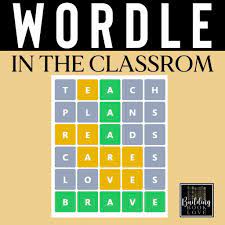In recent years, the surge of interest in word-based puzzles has reached educational settings with teachers incorporating games like Wordle into their classrooms. Wordle, a web-based word game where players have six attempts to guess a five-letter word, has turned into an unexpected yet powerful teaching tool. When incorporated into the classroom, it offers a range of benefits to students including enhanced vocabulary acquisition, spelling improvement, and development of deductive reasoning skills.
Using Wordle for Vocabulary Building
Wordle naturally encourages players to expand their lexicon as they brainstorm possible five-letter words. In a classroom setting, teachers can leverage this by setting specific parameters, such as themes related to current lessons or units. This targeted approach ensures that students are being exposed to and are practicing new words that are relevant to their coursework.
Facilitating Spelling Mastery
Correctly guessing the Wordle of the day requires not only thinking of the right word but also spelling it correctly. It’s a fun way for students to practice their spelling skills without the pressure of traditional assessments. Misspelled guesses also serve as excellent teachable moments for discussions about common spelling rules or exceptions.
Promoting Logical Reasoning and Problem Solving
Wordle is essentially a puzzle that requires logical deductions. Teachers can discuss strategies for choosing starting words or deciding which letters to retain or discard after each guess. This form of problem-solving promotes critical thinking and can be related back to mathematical and scientific methods of hypothesizing and testing theories.
Enhancing Collaboration and Social Learning
Teachers can have students work in pairs or small groups to solve the daily Wordle. This collaborative approach fosters communication skills as students must articulate their reasoning and listen to their peers’ suggestions. It also builds a sense of community as students share in the success or learn from the challenges of each game.
Addressing Diverse Learning Styles
For visual learners, the color-coded feedback after each Wordle guess is a clear manner of showing progress. Auditory learners can benefit from discussing strategies and verbalizing their thought processes, whereas kinesthetic learners engage through the actual interaction with the digital keyboard.
Considering Inclusion and Accessibility
Due to its simple design and gameplay, Wordle is accessible to a wide range of learners including those with learning differences. Educators however must consider how best to integrate it so all students feel included. This may involve using screen readers for visually impaired students or providing additional support for those with language-based learning disabilities.
Assessment and Reflection
Beyond just game play, educators can prompt students post-Wordle reflections where they articulate their strategy, what went well, what was challenging, and what they learned about word structure. Such reflective practices deepen learning and help solidify newly acquired vocabulary.
Conclusion
Wordle has shown itself to be more than just an addictive pastime; it has educational value that can enhance classroom learning when used thoughtfully. Its potential for building vocabulary, reinforcing spelling skills, developing critical thinking abilities, fostering collaboration, addressing diverse learning styles, and offering opportunities for assessment makes it an excellent resource in any teacher’s toolkit. As educators continue seeking innovative methods to engage their students while supporting key educational outcomes, it seems Wordle will continue gracing classrooms with its unique blend of fun and learning for some time to come.





